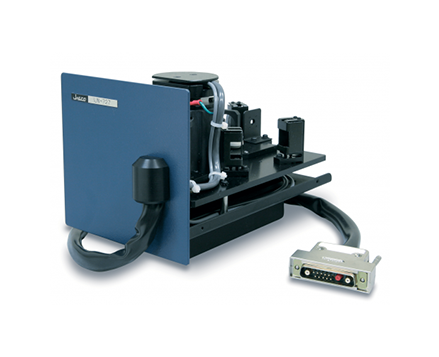Horizontal Integrating Sphere for Contact Lens Measurement
August 15, 2022
Introduction
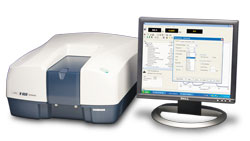
The PIV-756 and PIN-757 Horizontal Integrating spheres (Figure 1) are used for measuring the diffuse reflectance and transmittance of contact lenses and other samples. By positioning the samples horizontally, uneven or irregularly shapes can be easily measured. The horizontal integrating sphere allows precise measurement and increases the operating efficiency even for amorphous samples and samples that cannot be oriented vertically.
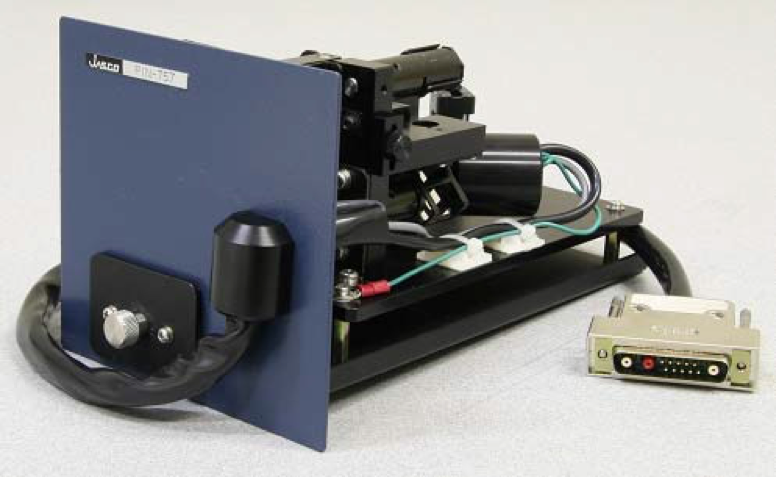
This application note demonstrates how the horizontal integrating sphere can be used to obtain diffuse transmittance measurements of a contact lens.
Experimental
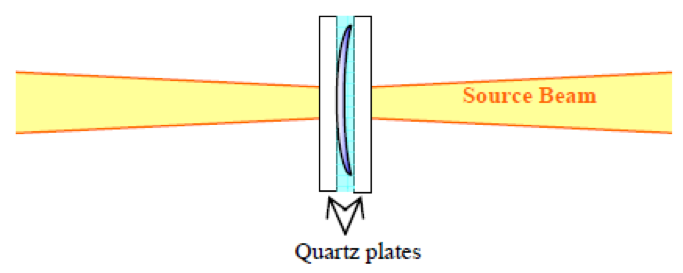
One of the typical methods for measuring the absorption of a contact lens with a vertical integrating sphere is to sandwich the sample in a saline solution between two quartz plates, as shown in Figure 2. Using this method, air bubbles in the cell and deformation of the lens may prevent precise measurement of the sample and the vertical placement of the sample makes it more difficult to determine the measurement area. Additionally, hard contact lenses may crack or be damaged when placed between the two quartz plates.
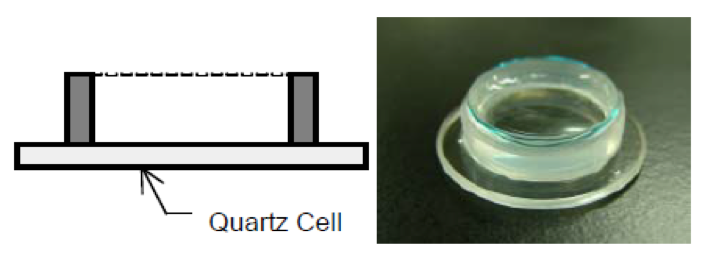
The horizontal integrating sphere allows samples to be placed horizontally in the sample holder as shown in Figure 3. The contact lens is held in an appropriate solution in the quartz cell during measurement. The net transmittance of the sample can be obtained by measuring a blank, or the lens holder filled with the preservative solution without contact lens. This blank measurement corrects for any stray light reflected from the surfaces of the sample holder and lens solution.
Figure 4 illustrates how the sample is placed on the sample holder and integrating sphere. The contact lens transmittance spectrum is shown in Figure 5.

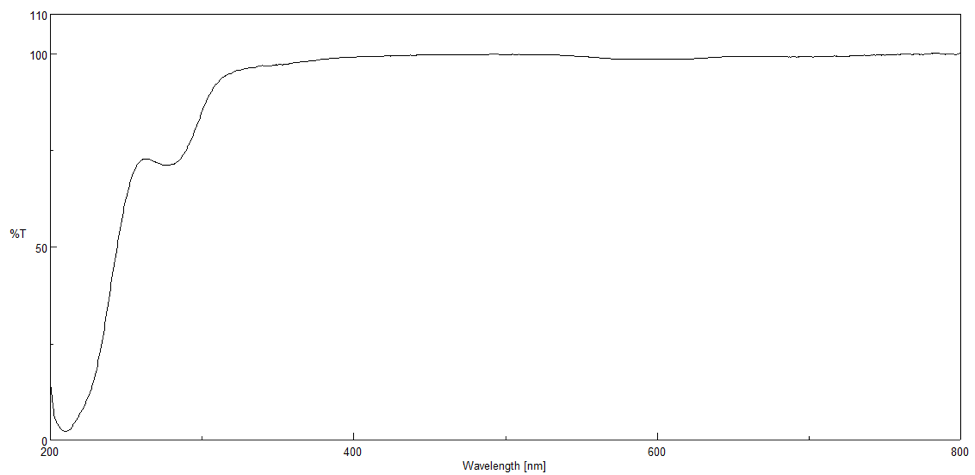
Keywords
V-650, UV-Visible/NIR spectrophotometer, PIN-757 Integrating sphere, contact lens, horizontal integrating sphere, diffuse transmittance
Conclusion
The horizontal integrating sphere is ideal for samples that cannot be measured with vertical placement. This accessory offers easy measurements for small or amorphous samples as well as samples that cannot be set vertically. Since the sample is placed on the top of the accessory, it can be measured while avoiding sample damage and also provide precise sample measurement of sample areas by simple visual examination of the specific area to be measured.
Required Products and Software
- V-750/760/770/780 UV-Visible/NIR Spectrophotometers
- PIV-756/PIN-757/903i Horizontal Sampling Integrating Sphere
Featured Products:
-
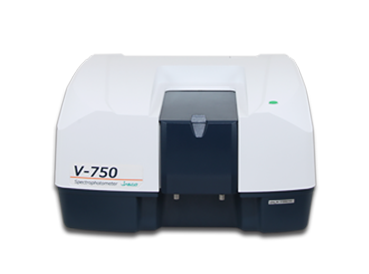
A high resolution UV-Visible double-beam spectrophotometer with single monochromator, variable SBW and PMT detector
V-750 UV-Visible Spectrophotometer
-
Integrating Spheres
-
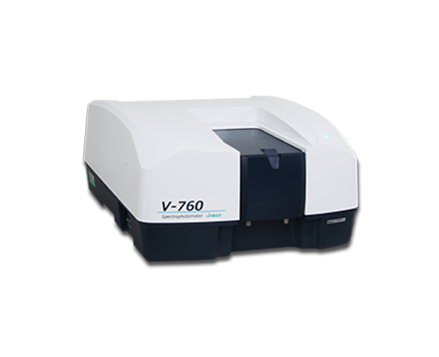
A high resolution UV-Visible double-beam, double-monochromator spectrophotometer with exceptional stray light and absorbance linearity
V-760 UV-Visible Spectrophotometer

Horizontal Integrating Sphere for Contact Lens Measurement
Introduction

The PIV-756 and PIN-757 Horizontal Integrating spheres (Figure 1) are used for measuring the diffuse reflectance and transmittance of contact lenses and other samples. By positioning the samples horizontally, uneven or irregularly shapes can be easily measured. The horizontal integrating sphere allows precise measurement and increases the operating efficiency even for amorphous samples and samples that cannot be oriented vertically.

This application note demonstrates how the horizontal integrating sphere can be used to obtain diffuse transmittance measurements of a contact lens.
Experimental

One of the typical methods for measuring the absorption of a contact lens with a vertical integrating sphere is to sandwich the sample in a saline solution between two quartz plates, as shown in Figure 2. Using this method, air bubbles in the cell and deformation of the lens may prevent precise measurement of the sample and the vertical placement of the sample makes it more difficult to determine the measurement area. Additionally, hard contact lenses may crack or be damaged when placed between the two quartz plates.

The horizontal integrating sphere allows samples to be placed horizontally in the sample holder as shown in Figure 3. The contact lens is held in an appropriate solution in the quartz cell during measurement. The net transmittance of the sample can be obtained by measuring a blank, or the lens holder filled with the preservative solution without contact lens. This blank measurement corrects for any stray light reflected from the surfaces of the sample holder and lens solution.
Figure 4 illustrates how the sample is placed on the sample holder and integrating sphere. The contact lens transmittance spectrum is shown in Figure 5.


Conclusion
The horizontal integrating sphere is ideal for samples that cannot be measured with vertical placement. This accessory offers easy measurements for small or amorphous samples as well as samples that cannot be set vertically. Since the sample is placed on the top of the accessory, it can be measured while avoiding sample damage and also provide precise sample measurement of sample areas by simple visual examination of the specific area to be measured.
Keywords
V-650, UV-Visible/NIR spectrophotometer, PIN-757 Integrating sphere, contact lens, horizontal integrating sphere, diffuse transmittance
Required Products and Software
- V-750/760/770/780 UV-Visible/NIR Spectrophotometers
- PIV-756/PIN-757/903i Horizontal Sampling Integrating Sphere

 Download This Application
Download This Application